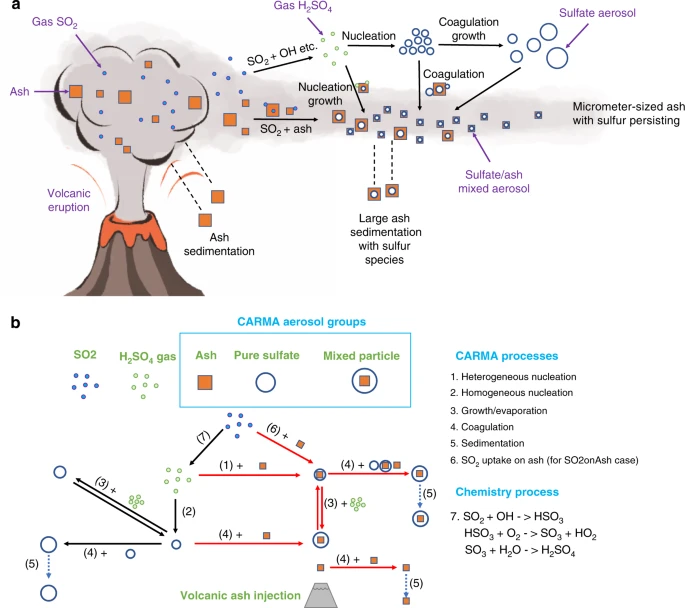Science Daily September 11, 2020
After the Mt. Kelut eruption in 2014 on the island of Java, stratospheric ash-rich aerosols were observed for months. A team of researchers in the US (University of Colorado, NOAA, industry) shows that the persistence of super-micron ash is consistent with a density near 0.5 g cm−3, close to pumice. Ash-rich particles dominate the volcanic cloud optical properties for the first 60 days. They found that the initial SO2 lifetime is determined by SO2 uptake on ash, rather than by reaction with OH as commonly assumed. About 43% more volcanic sulfur is removed from the stratosphere in 2 months with the SO2 heterogeneous chemistry on ash particles than without. The research suggests the need for re-evaluation of factors controlling SO2 lifetime in climate model simulations, and of the impact of volcanic ash on stratospheric chemistry and radiation…read more. Open Access TECHNICAL ARTICLE

A schematic diagram and the volcanic ash/sulfate module in the model. Credit: Nature Communications volume 11, Article number: 4526 (2020)